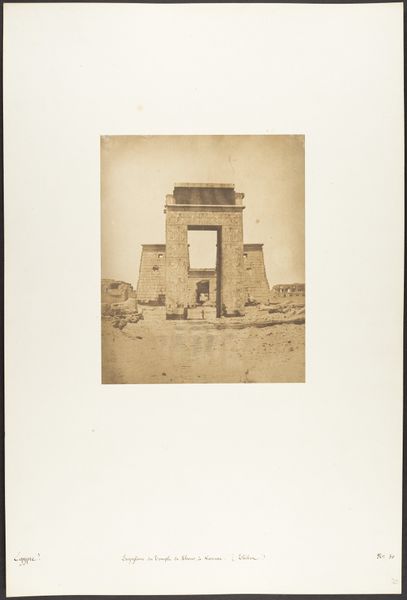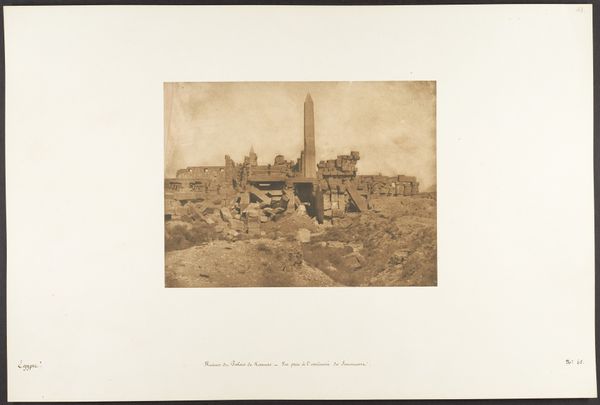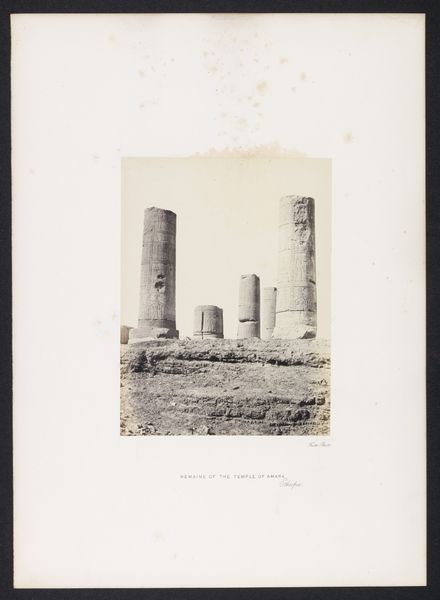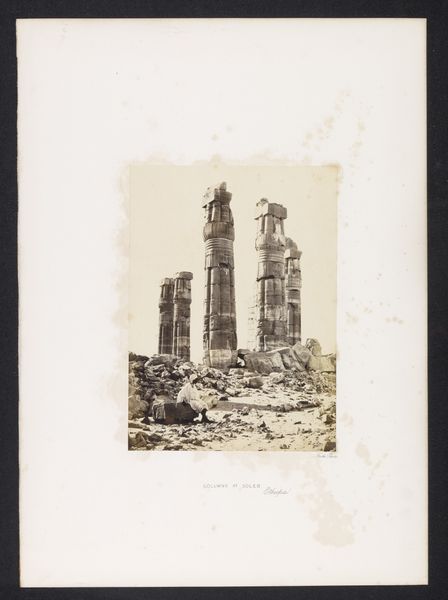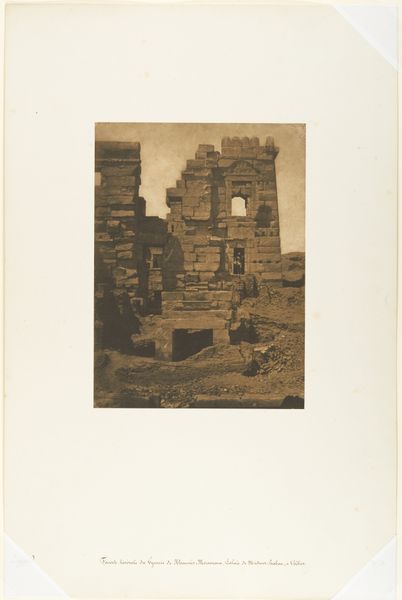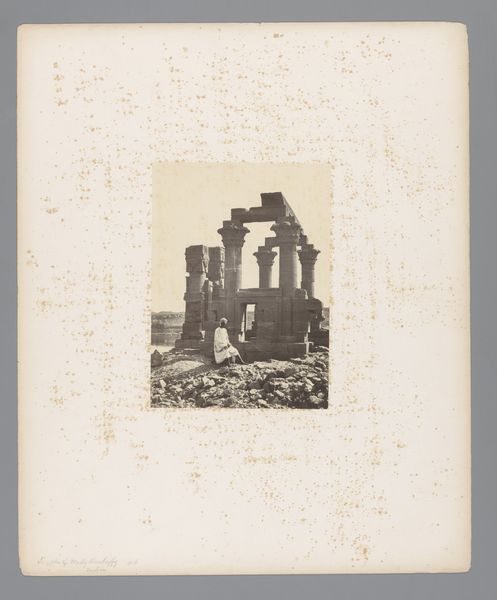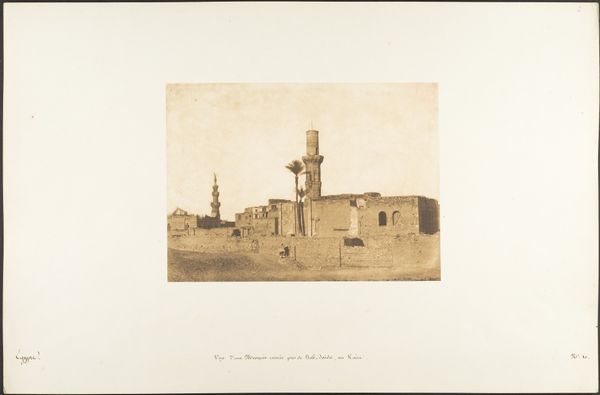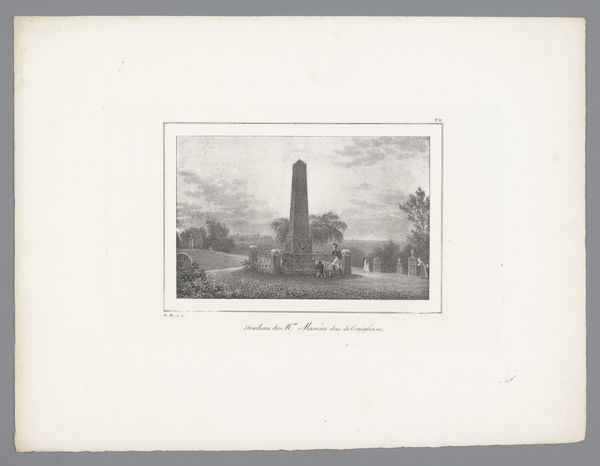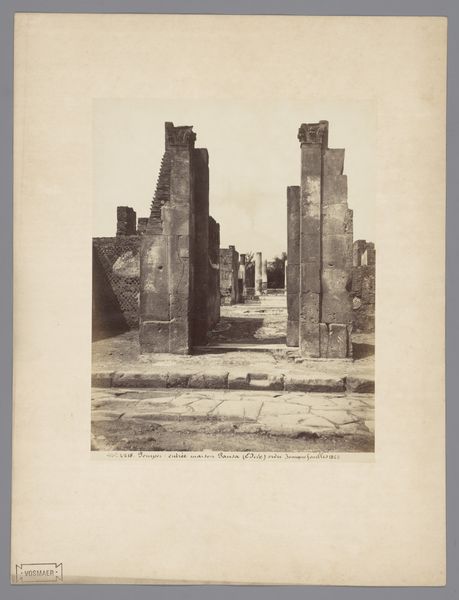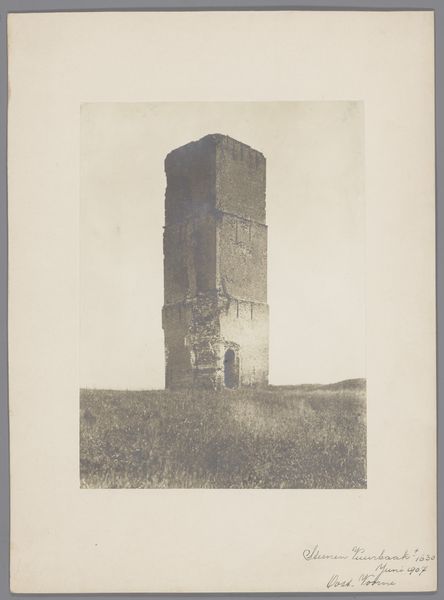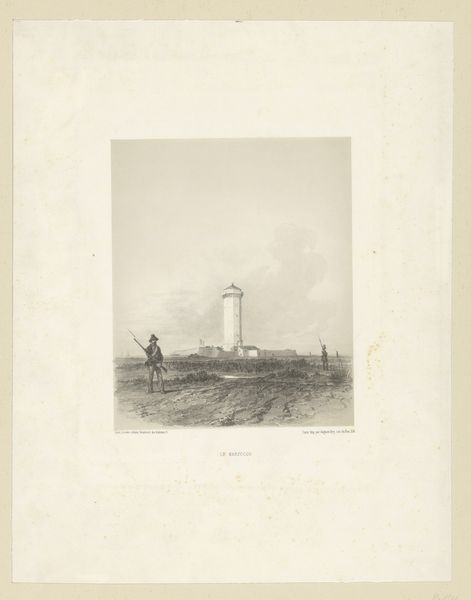
photography, site-specific, albumen-print
#
landscape
#
photography
#
ancient-mediterranean
#
site-specific
#
history-painting
#
albumen-print
Dimensions: Image: 7 11/16 × 6 5/8 in. (19.5 × 16.8 cm) Mount: 12 5/16 × 18 11/16 in. (31.2 × 47.5 cm)
Copyright: Public Domain
Editor: So, this albumen print by Maxime Du Camp, taken between 1849 and 1850, is called "Obélisques du Palais de Karnac (Thèbes)." It depicts the ruins of Karnak. It's kind of desolate, you know? What do you see in this piece, beyond just ruins? Curator: Beyond the visual documentation of ancient structures, this image serves as a poignant reminder of the complex relationship between power, history, and representation. Du Camp, as part of Flaubert's expedition, wasn't just capturing images, he was participating in a colonial gaze, framing a narrative of Western dominance over ancient cultures. How do you think the act of photographing these ruins, especially for a European audience, contributes to this dynamic? Editor: I guess I hadn't thought about it that way... that photography itself could be part of a power structure. It does feel a bit like he’s claiming ownership of the image, and maybe of the history too, just by taking the picture. Curator: Exactly. And consider the obelisks themselves. They were originally symbols of royal authority and religious significance. Now, they stand amidst rubble, photographed by a European man, to be consumed by European eyes. The ruins speak not only of the passage of time but also of a cultural appropriation. Who is telling this story, and for whom? Editor: It really flips my initial view on its head. I thought it was a picture of an interesting place, but it’s more about how *we* see that place, or how we are being directed to see it. Curator: Precisely. Du Camp’s photograph, intentionally or not, participates in a broader history of orientalism, reinforcing existing power dynamics. We, as viewers today, must recognize the layered contexts to truly understand this image. What lasting impact might images like this have on shaping perceptions and understanding of ancient cultures, even today? Editor: I'm going to be thinking about that for a while. It's definitely given me a new perspective on historical photography.
Comments
No comments
Be the first to comment and join the conversation on the ultimate creative platform.

